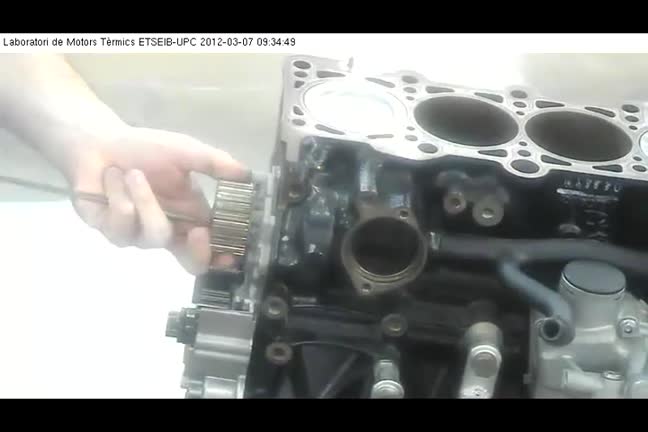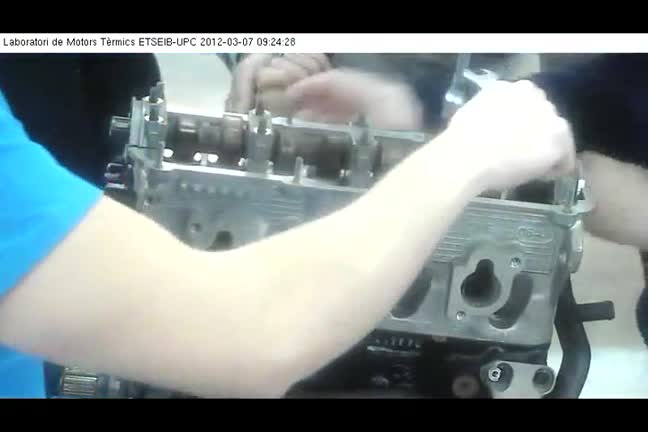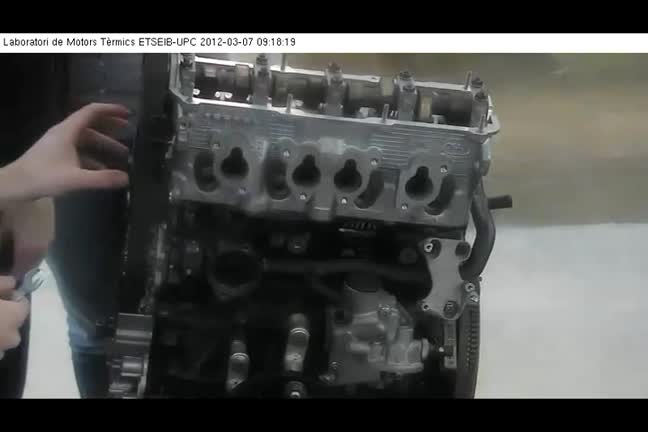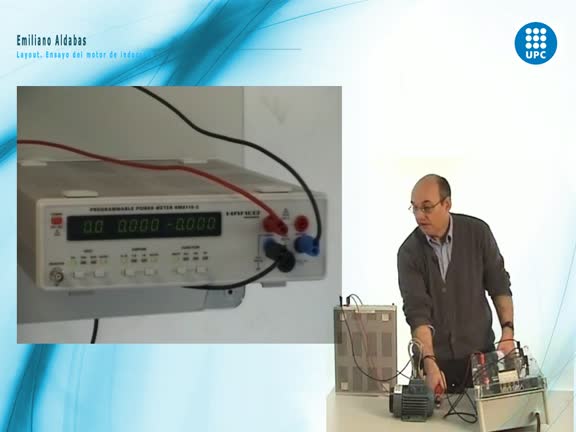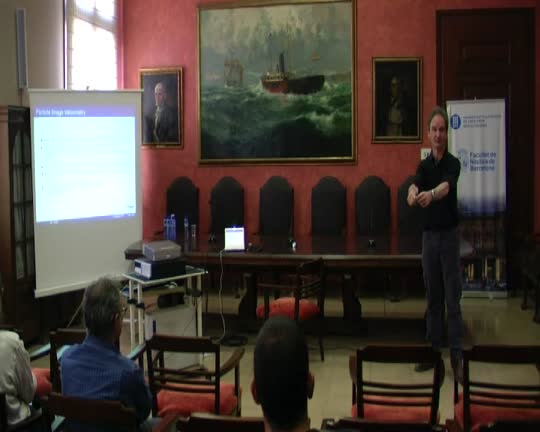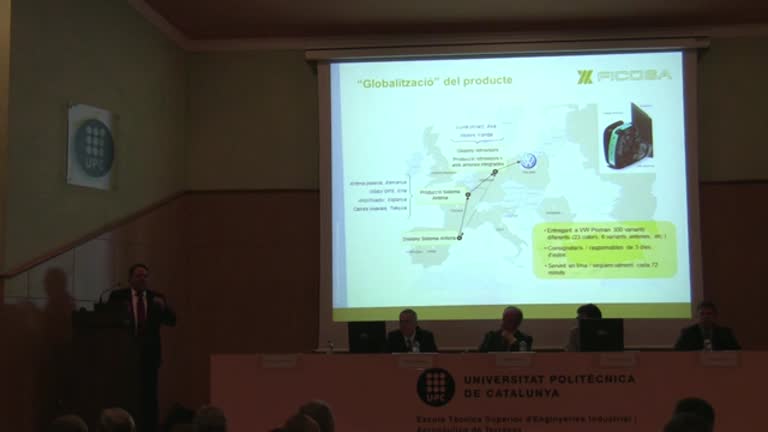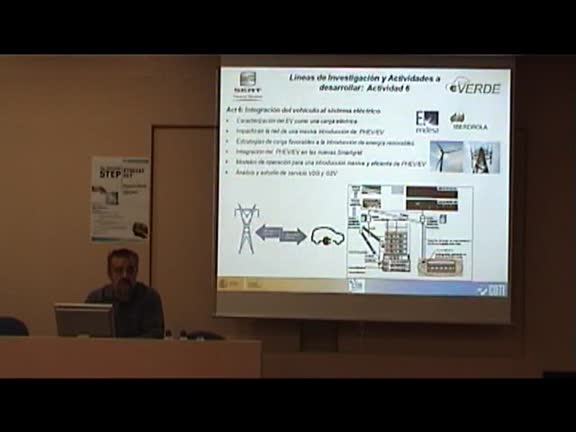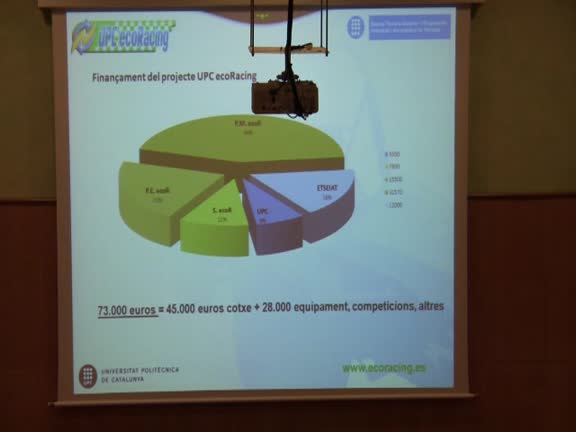Objectes multimèdia amb l’etiqueta: Enginyeria mecànica
Resultats de la cerca
Imaging the biomechanical properties of tissues: from bench to bedside
Accés obert
22 de febr. 2012
Kevin J. Parker, Ph.D. is a Professor of Electrical and Computer Engineering, Biomedical Engineering, and Radiology at the University of Rochester, USA.
He is one of the pioneers in the development of “sono-elastography”.
In the last 20 years there has been great progress towards the goal of real-time imaging of the hidden biomechanical properties of tissue. A proliferation of techniques that employ subtle tissue motion while imaging with ultrasound or MRI have been developed. Some of these are now being tested in world-wide clinical trials, and are available as research options on commercial scanning equipment.
This lecture will provide an overview of the major technical approaches and their clinical applications. Finally, a forecast of future developments is given.
He is one of the pioneers in the development of “sono-elastography”.
In the last 20 years there has been great progress towards the goal of real-time imaging of the hidden biomechanical properties of tissue. A proliferation of techniques that employ subtle tissue motion while imaging with ultrasound or MRI have been developed. Some of these are now being tested in world-wide clinical trials, and are available as research options on commercial scanning equipment.
This lecture will provide an overview of the major technical approaches and their clinical applications. Finally, a forecast of future developments is given.
Particle Image Velocimetry
Accés obert
6 d’abr. 2011
Conferència impartida a la sala de juntes de l'FNB pel professor Peter Bueken de l'Antwerp Maritime Academy (Bèlgica). "Chemical tankers often transport large amounts of toxic or dangerous products such as benzene, toluene, ... Exposure to these products presents a health hazard for the crew members of such ships, and precautions are necessary to protect them. During certain operations (loading and unloading, ventilating and cleaning tanks), vapours of these products are sometimes released into the air around the ship.
At Antwerp Maritime Academy, Capt. Werner Jacobs (one of the staff members) is currently investigating (as part of a PhD project) the behaviour of these vapours under different conditions (wind speeds,
directions, outlet velocities). One of the aims of his study is to investigate the flow and concentration of these vapours around the ship's superstructure by means of wind tunnel experiments. "Particle Image Velocimetry" (PIV) is a technique which allows the visualization of the flow of particles through a fluid (e.g. the air in a wind tunnel). This is typically done by "seeding" the fluid with visible "tracer particles" and analyzing the differences between two or more images of the fluid, taken with short time intervals. The relative movement of the particles from one image to the other allows one to determine the flow of the surrounding fluid. We are currently investigating whether PIV can be used to analyze the images obtained from the wind tunnel experiments.
The aim of this talk is to briefly describe the wind tunnel setup used in this experiment and to show some results of the experiments performed. Next, we will look at the ideas and mathematical techniques underlying the PIV-approach to the analysis of fluid flows and present some preliminary results of this research work in progress."
At Antwerp Maritime Academy, Capt. Werner Jacobs (one of the staff members) is currently investigating (as part of a PhD project) the behaviour of these vapours under different conditions (wind speeds,
directions, outlet velocities). One of the aims of his study is to investigate the flow and concentration of these vapours around the ship's superstructure by means of wind tunnel experiments. "Particle Image Velocimetry" (PIV) is a technique which allows the visualization of the flow of particles through a fluid (e.g. the air in a wind tunnel). This is typically done by "seeding" the fluid with visible "tracer particles" and analyzing the differences between two or more images of the fluid, taken with short time intervals. The relative movement of the particles from one image to the other allows one to determine the flow of the surrounding fluid. We are currently investigating whether PIV can be used to analyze the images obtained from the wind tunnel experiments.
The aim of this talk is to briefly describe the wind tunnel setup used in this experiment and to show some results of the experiments performed. Next, we will look at the ideas and mathematical techniques underlying the PIV-approach to the analysis of fluid flows and present some preliminary results of this research work in progress."
Noves tendències a l'automoció i sinèrgies amb el sector aeronàutic
Accés obert
3 de març 2011
Conferència inaugural del V Fòrum d'empreses del sector industrial i aeronàutic
Ciència i enginyeria dels instruments musicals. El cas de les xeremies de la cobla
Accés obert
28 de set. 2010
L’enginyeria, com l’art d’aplicar la ciència per incidir en la realitat, troba un bon exemple en els programes de
recerca impulsats per l’IEC en l’àmbit del les xeremies de la cobla.
L’evolució artesanal d’un instrument vers la seva millora és lenta, perquè es basa en la introducció de
retocs locals, l’un darrere l’altre. Però un retoc previst per a millorar una nota influeix en totes elles, i això
fa que calguin moltes proves per a millorar de manera significativa l’instrument. El disseny científic ―i això
és «enginyeria»― permet tenir en compte tot el conjunt de retocs per a millorar tot l’instrument, amb la qual
cosa l’evolució pot ser ràpida i amb un cost mínim perquè cal fer pocs prototips.
recerca impulsats per l’IEC en l’àmbit del les xeremies de la cobla.
L’evolució artesanal d’un instrument vers la seva millora és lenta, perquè es basa en la introducció de
retocs locals, l’un darrere l’altre. Però un retoc previst per a millorar una nota influeix en totes elles, i això
fa que calguin moltes proves per a millorar de manera significativa l’instrument. El disseny científic ―i això
és «enginyeria»― permet tenir en compte tot el conjunt de retocs per a millorar tot l’instrument, amb la qual
cosa l’evolució pot ser ràpida i amb un cost mínim perquè cal fer pocs prototips.


